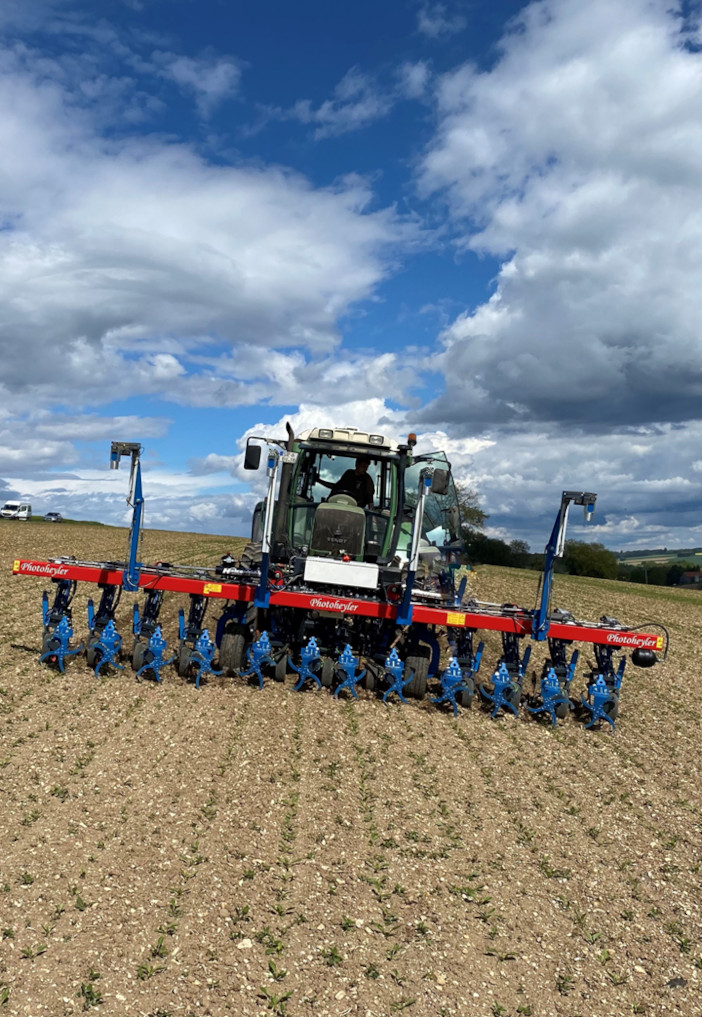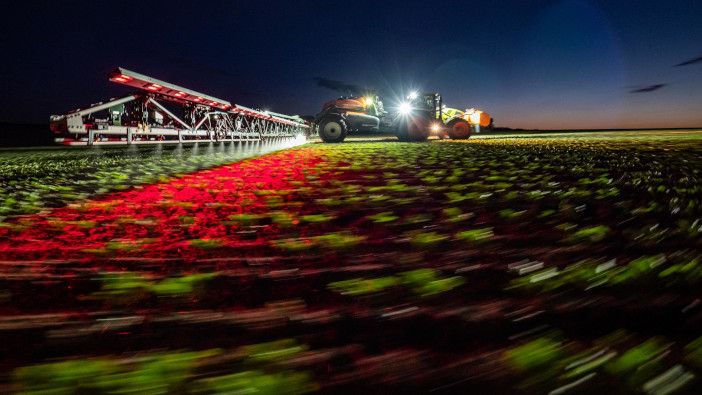Harald Kramer, North Rhine-Westphalia Chamber of Agriculture (Crop Protection Service)
At present, chemical crop protection is the subject of extreme debate for many. In some respects, however, it is unjustified, as it provides the basis for producing sufficient food. Although the standard in crop protection technology is already very high, the agricultural machinery industry is constantly finding ways to make crop protection even more precise and traceable. This is because the trends from Agritechnica 2019, such as further developments in the field of chopping technology, forecasting models, boom spraying, etc., have largely already found their way into practice, but have also been decisively further developed. It is therefore not surprising that topics such as artificial intelligence (AI) have also found their way into hoeing, harrowing and spraying. In the foreseeable future, the public sector will certainly demand even more traceability of plant protection measures, so that we have an opportunity to document the undoubtedly already very high standard for the outside world. The hope would only be that a little calm would also return to the public discussion when it is seen that agriculture is doing everything possible to carry out plant protection in harmony with the environment.
Increasing performance further
The structure of agriculture is subject to a trend that is definitely moving towards larger areas. This is because an increasing number of farmers are releasing their land for lease because they no longer want to or are no longer able to run their own farms. Here, of course, ever larger barrel volumes of field sprayers play a decisive role. Because with the increasing field-to-farm distances, the filling strategy of the sprayer must certainly be reconsidered, i.e. filling in the field could become more important in the near future. Here, closed filling systems (CTS) can also make a positive contribution to filling sprayers in the field ‘without spilling’. Corresponding studies are also currently underway in the use of CTS systems for user contamination. This is important in order to perhaps receive positive signals from the regulatory authorities as well as greater acceptance in practice. Direct feed systems also play their part in increasing efficiency. After all, if such techniques save extra passes and treatment is only carried out where it is absolutely necessary, this is a nice marriage of economic and environmental approaches to farming practice. 2021 has also shown that not all problems can be solved with a hoe. Because if it’s too damp outside, the hoe can’t always do a good job. This is where cultivation systems with a combination of hoe and beam sprayer come into play in a wide variety of configurations. Yet for all the ever faster and larger technology, the user must also continue to be aware of the requirements for tractors with regard to axle loads (especially for front-tank systems), permissible total weights, etc. It quickly becomes apparent that, in addition to the technical aspect, the conditions in the field and the corresponding cultivation region are the decisive factors as to what works and what doesn’t.
Intelligent crop protection technology

One trend is unmistakable across all spraying systems: the utilisation of the sprayer can and must still be increased. In the process, electronic aids are certain to be a decisive factor. This already begins with corresponding diagnosis and forecasting models. For first of all, the user must of course know the situation in the field. In the recent past, the specification was the desire for real-time solutions, i.e., to carry out everything during one crossing. However, here as well there are approaches for creating the application maps beforehand with multicopters or drones. The major advantage is due to the fact that with systems of this kind, the exact treatment area can be calculated. Then only as much spray liquid is subsequently made available as is absolutely necessary, therefore eliminating any residual quantities that would often cause disposal difficulties for practitioners. In addition, more complex and more exact sensors can naturally also be used for detection, as here only one sensor is required. If the entire working area is to be covered on the sprayer in the rod assembly, a great deal more sensors are required, which would of course dramatically increase the price of the machine. As a result, various technologies can optimally supplement each other to achieve even more exact crop protection.
However, for all the electronic support and the large number of individual modules, there is an increasing demand from practice for user friendliness and overall solutions. For this reason, it is also hardly surprising that manufacturers required comprehensive, open solutions that implement an intuitive decision support system for the target-oriented, on-schedule, precise application of crop protection agents. In particular, support in the area from the legal application of crop protection agents up to documentation provide the greatest benefits for practice here.
Nozzle technology – a perennial favourite
For many years now, the main focus of nozzle technology has been on nozzles that, in addition to a good biological effect, also keep an eye on fringe structures that are worth protecting. The adaptation of different nozzle designs for use with pulse width modulation (PWM) systems is a trend that cannot be overlooked. This is because it is not possible to simply install the existing injector nozzles in the PWM systems and drive off. The area of liquid fertilisation with variable application rate systems is also becoming increasingly important. The so-called ‘farmers’ billion’ in particular has given a boost to PWM systems in practice. After all, people have been talking about this technology for several decades. But now systems are emerging that work reliably with frequencies from 20 to 100 Hz, enabling various possibilities to become a reality. In addition to curve compensation, spot spraying, individual nozzle monitoring and reduction of application rates within the boom, these systems show an enormous potential for meeting the constantly increasing demands and requirements in practice. Of course, it does not always have to be PWM, because electrically or pneumatically switched nozzle bodies can be a step in a similar direction of versatile use. With all the possibilities, one must not forget the situation in practice, because the farmer must also be able to pay for all the technology in the end.
At the end of the day, all techniques and innovations pursue the same goal: to apply only as much crop protection product as precisely and sustainably as possible, in order to implement integrated crop protection in practice across the board.


